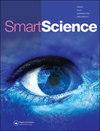基于力学性能响应面法的3d打印PLA零件参数优化
IF 1.4
Q2 MULTIDISCIPLINARY SCIENCES
引用次数: 0
摘要
摘要本研究旨在利用响应面法优化3D打印关键工艺参数(喷嘴温度、层厚和打印速度)的组成,以最大限度地提高可生物降解的3D打印PLA样品的拉伸强度和弯曲强度。为此,利用实验中三个独立参数、两个水平的CCD,利用基于fdm的3D打印机制作了20个平面PLA零件。对3d打印PLA零件的力学行为进行了研究,并根据这三个参数建立了一个模型,以获得科学的信息来优化响应。结果表明,层厚和喷嘴温度对机械响应有较大影响。冠状动脉支架的一个主要方面是其力学行为应符合医学要求,如柔韧性等,这对于血管在动脉内的放置是非常必要的,同时还需要足够的径向刚度来支撑血管。基于这方面的识别响应是拉伸和弯曲强度。关键词:FDMPLAtensile &弯曲强度响应面方法中心复合材料设计优化感谢Amity大学CAM LAB的支持。作者在题为“使用响应面方法预测FDM打印PLA零件的机械性能”的手稿中所作的贡献如下:Ayushi Thakur是印度诺伊达Amity大学的研究学者。她正在攻读机械工程博士学位。她利用Minitab软件对3D打印零件的优化参数进行了实验研究。Umesh Kumar Vates博士是印度北方邦Amity大学机械工程系的副教授。他在印度理工学院丹巴德(印度国家重点研究所)完成了机械工程博士学位。他的角色是作为这项工作的专家,同时监督和激励上述博士学者。他在这项研究工作中提出了优化技术。Sanjay Mishra博士是印度Gorakhpur Madan Mohan Malviya理工大学的副教授。他激励了上述博士学者,并对优化结果进行了解释。未来的工作范围,未来将致力于用有限元法优化PLA支架结构的设计,并研究其在模拟斑块动脉中的功能。本文章由计算机程序翻译,如有差异,请以英文原文为准。
Parametric optimization of 3D-printed PLA part using response surface methodology for mechanical properties
ABSTRACTThe present study aimed to optimize the composition of 3D printing critical process parameters (nozzle temperature, layer thickness, and printing speed) to maximize the tensile strength and flexural strength of the biodegradable 3D printed PLA specimen using response surface methodology. For this purpose, after using the CCD of experiments with three independent parameters with two levels, 20 flat PLA parts were produced with an FDM-based 3D printer. The mechanical behavior of the 3D-printed PLA part was investigated, and a model was developed from the three parameters to get the scientific information to optimize the responses. As a result, it was noticed that the layer thickness and nozzle temperature greatly influenced mechanical response. One of the major aspects of the coronary stent is the mechanical behavior should be in accordance with the medical requirements such as flexibility, which is very necessary to facilitate the placement of the vessel in the artery, and sufficient radial rigidity is also required to support the vessel. Based on this aspect the identified responses are tensile and flexural strength.KEYWORDS: FDMPLAtensile & flexural strengthresponse surface methodologycentral composite designoptimization AcknowledgmentsThe support from Amity University CAM LAB is gratefully acknowledged.Disclosure statementNo potential conflict of interest was reported by the author(s).Author(s) contributionAuthor(s) contribution in the manuscript entitled ‘Prediction of Mechanical Properties of FDM printed PLA parts using response surface methodology’ is as follows: Ayushi Thakur is a Research Scholar at Amity University Uttar Pradesh, Noida, India. She is pursuing Ph.D. in Mechanical Engineering. She has done the experimental investigation of optimization parameters for 3D printed parts using Minitab software. Dr. Umesh Kumar Vates is an Associate professor at the Mechanical Engineering Department of Amity University, Uttar Pradesh, India. He has completed his Ph.D. in Mechanical Engineering from IIT Dhanbad (An Institute of National Importance). His role is as an expert in this work while monitoring and motivating the above PhD scholar. He has suggested the optimization technique in this research work. Dr. Sanjay Mishra is an Associate Professor at Madan Mohan Malviya University of Technology, Gorakhpur, India. He has motivated the above PhD scholar and interpreted the optimized results.Future Scope of the workIn the future, further efforts will be dedicated to Design optimizations of PLA stent structure by FEM and investigating its function in a simulated plaque artery.
求助全文
通过发布文献求助,成功后即可免费获取论文全文。
去求助
来源期刊

Smart Science
Engineering-Engineering (all)
CiteScore
4.70
自引率
4.30%
发文量
21
期刊介绍:
Smart Science (ISSN 2308-0477) is an international, peer-reviewed journal that publishes significant original scientific researches, and reviews and analyses of current research and science policy. We welcome submissions of high quality papers from all fields of science and from any source. Articles of an interdisciplinary nature are particularly welcomed. Smart Science aims to be among the top multidisciplinary journals covering a broad spectrum of smart topics in the fields of materials science, chemistry, physics, engineering, medicine, and biology. Smart Science is currently focusing on the topics of Smart Manufacturing (CPS, IoT and AI) for Industry 4.0, Smart Energy and Smart Chemistry and Materials. Other specific research areas covered by the journal include, but are not limited to: 1. Smart Science in the Future 2. Smart Manufacturing: -Cyber-Physical System (CPS) -Internet of Things (IoT) and Internet of Brain (IoB) -Artificial Intelligence -Smart Computing -Smart Design/Machine -Smart Sensing -Smart Information and Networks 3. Smart Energy and Thermal/Fluidic Science 4. Smart Chemistry and Materials
 求助内容:
求助内容: 应助结果提醒方式:
应助结果提醒方式:


